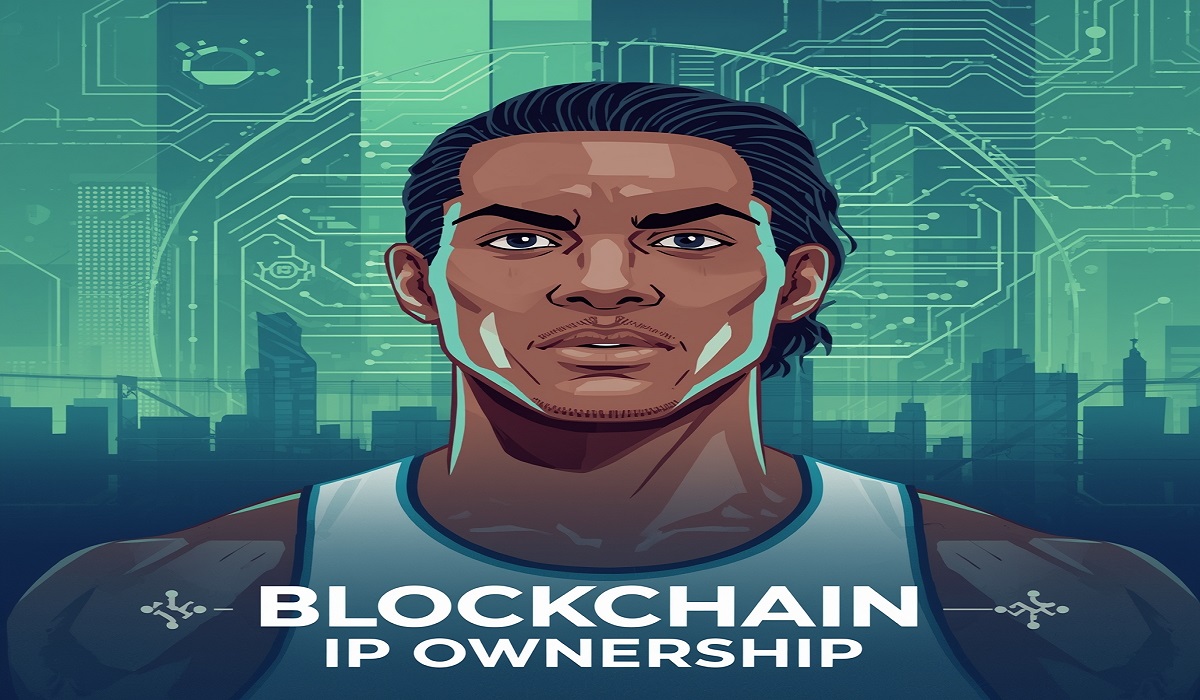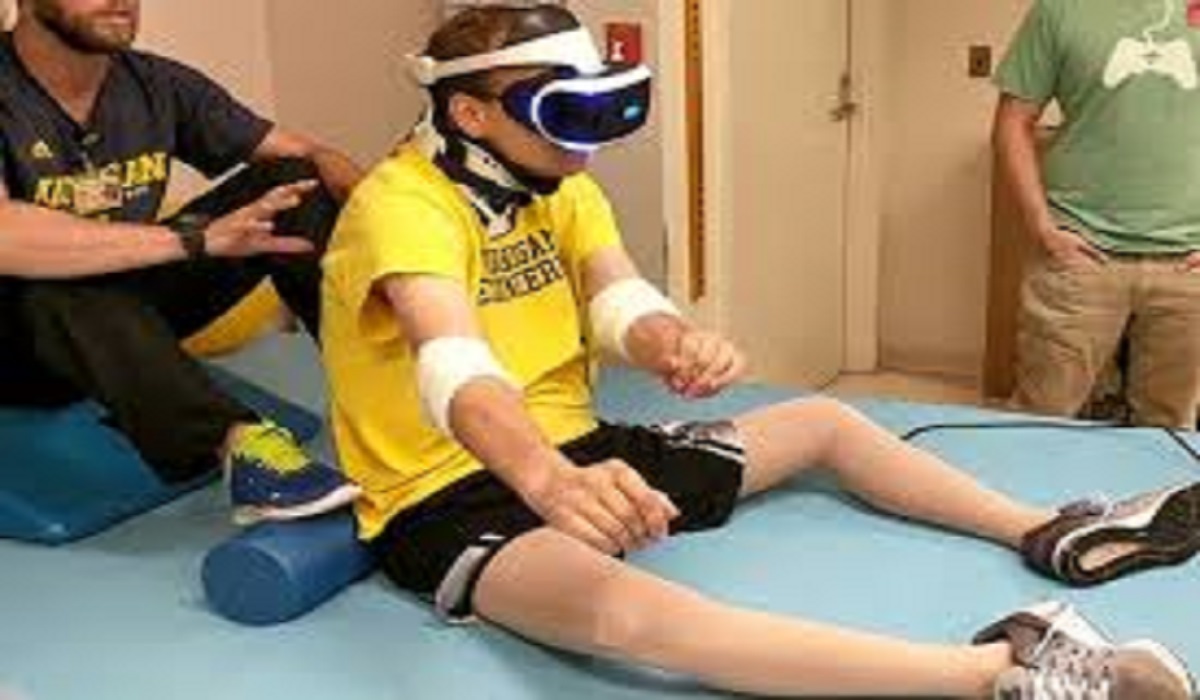Blockchain for Athlete IP Ownership
Blockchain for Athlete IP Ownership: The roar of the crowd is all around you. You have the best seat in the stadium, right at the fifty-yard line. You can see the sweat on the players’ brows and hear the crunch of their pads.
But when you turn to high-five the person next to you, your hand moves through empty air. You are watching the big game in Virtual Reality, a fantastic experience, but you are physically alone in your living room. This new way of watching sports is amazing, but it can also lead to a quiet, growing problem some are calling VR Sports Fan Isolation Syndrome.
This feeling is not about the technology being bad. It is about how we use it. This article explains what this new form of isolation is, why it happens to passionate fans, and, most importantly, how you can enjoy the incredible world of VR sports without losing the human connections that make being a fan so special.
What is VR Sports Fan Isolation Syndrome?
VR Sports Fan Isolation Syndrome describes the sense of loneliness and disconnection some people feel after spending long periods watching sports in virtual reality, separated from friends, family, and other fans in the physical world.
It is not an official medical diagnosis, but a term that helps us talk about a real social experience. When you put on a VR headset, you enter a brilliant digital world. The problem is, you leave the physical one behind. For a few hours, this is fine. But when it becomes the only way you watch games, it can change how you feel about being a sports fan.
The “isolation” part comes from missing out on shared moments. Think about the small things: the shared groan when your team misses a shot, the laughter during a funny commercial, or the spontaneous conversations during halftime.
These small social interactions are like glue for our relationships. VR Sports Fan Isolation Syndrome – Latest highlights what happens when that glue is not there anymore. You might have a great time during the game, but feel a strange emptiness after you take the headset off.
- The Physical Separation: Your body is in a room by itself. You cannot nudge your friend’s elbow or share a bag of snacks without taking the headset off.
- The Missing Chatter: The natural, unplanned talk that happens during a live event is absent. There is no one to immediately turn to and say, “Can you believe that call?”
- The Digital Bubble: You are inside a digital bubble. While you might see digital avatars of other fans, the experience lacks the warmth and unpredictability of human presence.
Why VR Sports Viewing Can Feel Lonely?
The technology behind VR sports is built to amaze you. Companies design these experiences to be as realistic and engaging as possible. So why can such an exciting activity sometimes lead to feelings of loneliness?
The answer lies in the difference between being surrounded by a crowd and being connected to it. The very things that make VR great can also contribute to VR Sports Fan Isolation Syndrome.
First, VR tricks your brain into thinking you are in a stadium, but your body knows it is sitting on your couch. This split can feel strange. Your eyes see thousands of cheering fans, but your ears might also hear your refrigerator humming in the real world.
This conflict between the digital and the physical can stop you from feeling fully immersed in either place. You are stuck in between, which is a lonely feeling. The latest headsets are better at blocking out the real world, but this can make the return to a quiet, empty room even more jarring when the game ends.
Second, social interaction in VR is often programmed and limited. You might be able to send a “thumbs-up” emoji or use a pre-set cheer. But you cannot have a complex, emotional conversation with a digital avatar the way you can with a real person sitting beside you.
The spontaneous, human element is lost. This lack of deep, real-time connection is a core reason why the VR Sports Fan Isolation Syndrome phenomenon is being discussed by psychologists and tech experts. They note that digital substitutes for social contact often do not satisfy our deep need for genuine community.
Spotting the Signs in Your Own Life
You might be wondering if what you are feeling is a temporary mood or a sign of this new form of isolation. It is important to pay attention to your feelings and habits. Recognizing the signs is the first step toward making a positive change. The symptoms of VR Sports Fan Isolation Syndrome are often subtle and build up over time.
One clear sign is a change in your social routines. Maybe you used to meet friends at a sports bar every Sunday. Now, you make excuses to stay home for the “better view” in VR. Perhaps your family complains that you are always “in the headset” and not talking with them during games.
Another sign is how you feel after the VR experience. Do you feel energized and happy, or do you feel a bit down and disconnected from the world? If your VR sports habit is replacing real-world interactions and leaving you feeling empty, it is worth considering.
Here are a few questions to ask yourself:
- Do I prefer watching games in VR alone rather than with friends or family in person?
- Do I feel a sense of letdown or sadness after I take off the headset?
- Have my friends or family commented on my absence during games?
- Am I using VR sports to avoid social situations?
Answering “yes” to some of these questions does not mean you should sell your headset. It simply means you might need to find a better balance to prevent VR Sports Fan Isolation Syndrome from affecting your well-being.
Practical Ways to Stay Social in a Virtual World
The good news is that you do not have to choose between amazing technology and healthy relationships. You can enjoy both. The key is to be intentional about how you use VR. By making a few small changes, you can build a bridge between your virtual and real-life social worlds. This is the most effective strategy for combating VR Sports Fan Isolation Syndrome.
A powerful idea is to make VR watching a group activity in the real world. Invite a friend or two over to watch the big game with you. You can take turns using the headset for a quarter each, while everyone else watches on the big screen.
This blends the wow factor of VR with the fun of being together. You can talk about what it felt like to be “on the field” and share laughs about the experience. This approach directly tackles the core issue of VR Sports Fan Isolation Syndrome by ensuring you are not physically alone.
Another method is to use technology to stay connected while in VR. Use a voice chat app on your phone, like a group call with friends, and listen through one earbud under your headset. This way, you can still chat and react with your friends in real-time, even if they are not in the same room.
It creates a hybrid experience that keeps the social connection alive. The goal is to use VR as a tool for enhancement, not as a wall for separation. Thinking this way is the best defense against the negative effects of VR Sports Fan Isolation Syndrome – Latest.
The Future of Social VR for Sports Fans
Technology companies are already aware of the isolation problem. The next generation of social VR platforms is being designed with togetherness in mind. The future looks less like watching a game by yourself in a headset and more like attending a virtual watch party with friends from all over the world. These developments aim to solve the very issues highlighted by VR Sports Fan Isolation Syndrome.
Imagine this: instead of just being a passive viewer, you and your friends’ avatars could sit together in a virtual luxury box. Your avatars would show your real-life expressions and gestures because the technology would track your face and body. You could make eye contact, high-five each other when your team scores.
And have natural conversations as if you were in the same room. This level of social presence could dramatically reduce feelings of loneliness. The VR Sports Fan Isolation Syndrome discussions are pushing developers to create these more sophisticated and socially rich environments.
The future will also likely include better connections to the physical world. “Mixed reality” features could allow you to see your real-life snack bowl or the person sitting next to you on the couch, projected into your virtual view.
This blending of realities ensures you never feel completely cut off from your surroundings. As these technologies improve, the hope is that the term VR Sports Fan Isolation Syndrome will become a historical footnote—a problem we used to have that was solved by smarter, more human-centered design.
Finding Your Personal Balance
Every new technology changes our lives in some way. Virtual reality for sports is no different. It offers an unbelievable viewing experience that was pure science fiction just a few years ago. The challenge is not to reject this amazing tool, but to learn how to use it in a way that adds to our happiness without taking away from our human needs. Managing VR Sports Fan Isolation Syndrome – Latest is about finding a personal balance that works for you.
Think about what you value most about being a sports fan. Is it the raw, visual detail of the game? VR is fantastic for that. Is it the camaraderie and shared identity with other fans? That often happens best in the physical world. Your solution might be to use VR for special events or for a part of the game, then switch to a traditional TV broadcast to be with your family.
There is no single right answer. The important thing is to be mindful of how your habits make you feel. By paying attention, you can enjoy the future of sports without leaving your connections behind. The conversation around VR Sports Fan Isolation Syndrome – Latest is a reminder that even in a high-tech world, people need other people.
Frequently Asked Questions
1. Is VR Sports Fan Isolation Syndrome a real medical condition?
No, VR Sports Fan Isolation Syndrome – Latest is not a formal medical diagnosis. It is a descriptive term that helps us understand and talk about the feelings of loneliness and disconnection that some people experience when they use VR for sports viewing too much, at the cost of real-world social interaction.
2. Can teenagers experience this form of isolation?
Yes, anyone who uses VR for long periods without real-world social balance can feel its effects. In fact, teenagers, who are still developing social skills and friendships, might be especially sensitive to replacing in-person interactions with solely digital ones. Parents should talk with their kids about healthy tech habits.
3. Will better VR graphics solve this problem?
While better graphics make the experience more realistic, they do not automatically solve the social part. A more beautiful virtual world might be more engaging, but it does not replace the need for genuine, spontaneous conversation and connection with other people. Social features are more important than just visual upgrades.
4. How is this different from feeling lonely after playing too many video games?
The feeling is very similar. The unique part of VR Sports Fan Isolation Syndrome – Latest is that it combines the immersive, isolating nature of VR with a traditionally very social activity—watching sports. This contrast between a hyper-social event and a physically solitary viewing method makes the feeling of isolation stand out more.
5. What is the single most important thing I can do to prevent this?
The most important step is to be intentional. Decide before the game how you will include social interaction. This could mean inviting someone over, calling a friend during halftime, or limiting your VR time to just one quarter. Making a plan ensures you stay connected.
Conclusion
Virtual reality has given sports fans a front-row seat to the action, changing the game forever. But the core of being a fan has always been about shared passion and community. VR Sports Fan Isolation Syndrome is a signal that we need to blend the best of new technology with the timeless need for human connection.
By being aware of the risks and making simple, smart choices, we can enjoy the thrill of VR without losing the joy of celebrating a win with a friend by our side. The goal is a future where technology brings us together, both virtually and in real life.







